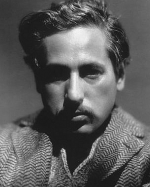Josef Von Sternberg
Josef von Sternberg, born Jonas Sternberg, 29 May 1894 – 22 December 1969, was an Austrian-American film director. He is particularly noted for his distinctive mise en scène, use of lighting and soft lens, and seven-film collaboration with actress Marlene Dietrich.
Sternberg was born Jonas Sternberg to a Jewish family in Vienna. When he was two years old the family moved to America, and he spent most of his childhood in New York City and Lynbrook, New York. The false aristocratic title ‘von’ was added by actor/co-producer Elliott Dexter in 1925 during the production of By Divine Right), supposedly to “even up” the credits as they appeared on screen. Sternberg did not protest, since it invited comparison with his hero, Erich von Stroheim. His father, Moses Sternberg, a former soldier in the army of Austria-Hungary, twice tried to make a home for the family in the US before finding employment as a lace worker.
Sternberg dropped out of Jamaica High School and worked as an errand boy in a lace warehouse. He later obtained a job cleaning and repairing movie prints, and soon found himself working for William A. Brady at the World Film studios at Fort Lee, New Jersey. He made his directorial debut in 1925 with The Salvation Hunters. Charlie Chaplin was impressed by this film, and encouraged Douglas Fairbanks and Mary Pickford to acquire the rights to it. Pickford also asked him to direct a film with her as star, but rejected his first scenario. Chaplin also commissioned him to write and direct A Woman of the Sea, starring his former star and lover Edna Purviance, but this film was also suppressed. Sternberg had commercial success later in the decade at Paramount Pictures with the late-period silent films The Last Command and The Docks of New York, both noted for their influential cinematography. His reputation was also advanced by a series of early gangster films including Underworld and Thunderbolt.
Sternberg’s career suffered a decline after Thunderbolt. and he accepted an invitation to make a film in Germany. In 1929, Sternberg worked in Berlin and directed the widely acclaimed film Der blaue Engel in both German and English versions simultaneously, the first German-language talkie. It was Sternberg’s second film with the German actor Emil Jannings as the doomed Professor Rath.


